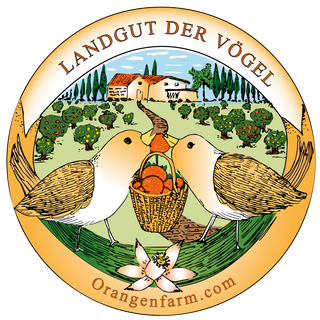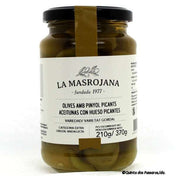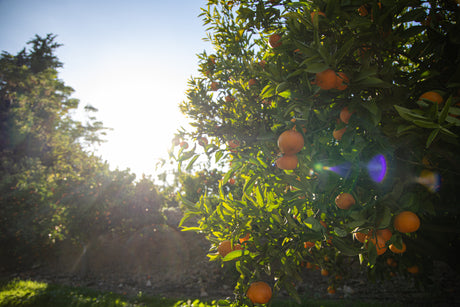Avocado total: Varieties, recipes & facts for connoisseurs
Welcome to Avocado Week! This week, we're celebrating the green superfruit in all its facets—from its diverse varieties to creative recipe ideas and sustainable cultivation methods. Be inspired and discover how versatile and environmentally friendly avocados can be.
Origin & History of the Avocado: A Fruit with Roots in Antiquity
The history of the avocado goes back a long way—much further than one would expect for a trendy superfood. Archaeological finds show that the avocado was already being used in Central America over 7,000 years ago. It was a staple food of indigenous peoples, especially in what are now Mexico, Guatemala, and Peru.
With the arrival of the Spanish in the 16th century, the avocado was first brought to Europe. From there, it slowly spread throughout the world. It was cultivated commercially in the United States at the beginning of the 20th century – initially primarily in California, where the "Hass" variety, now the world's most famous, originated.
Variety of avocados: Hass, Reed and wild avocado
Avocado Hass
The Hass avocado is the best-known and most widely grown variety worldwide. Its dark green to almost black, rough skin and creamy, nutty flesh make it an ideal ingredient for guacamole, toast, and smoothies. It ripens after harvest, making it easy to transport.
Avocado Reed
The Reed avocado is larger and rounder than the Hass variety. Its smooth, green skin remains green even when ripe. The flesh is particularly creamy and has a mild flavor. Reed avocados are excellent in salads and as a spread.
Wild avocado
Wild avocados come from native avocado trees and vary in shape and size. They often have a more intense flavor and are prized in some regions. However, due to their limited availability, they are rarely found commercially.
Simple and delicious avocado recipes
Avocado Chocolate Brownies (vegan)
Ingredients:
- 1 ripe avocado
- 100 g dark chocolate
- 100 g flour
- 50 g cocoa powder
- 80 g sugar
- 1 tsp baking powder
- 100 ml plant milk
Preparation:
Melt the chocolate and puree the avocado. Mix all ingredients until smooth, pour into a baking dish, and bake for about 25 minutes at 180°C. Moist, chocolatey—and completely egg- or butter-free!
Avocado-banana smoothie
Ingredients:
- ½ avocado
- 1 ripe banana
- 1 cup coconut water
- 1 tsp honey
- Ice cubes as needed
Preparation:
Combine all ingredients in a blender and blend until smooth. Serve cold.
Avocado pasta
Ingredients:
-250g spaghetti
- 1 ripe avocado
- 2 tsp pesto verde
- 1 garlic clove (crushed)
- 1 tbsp olive oil
- Salt, pepper, nutmeg to taste
Preparation:
Cook spaghetti according to the package instructions. Meanwhile, mash the avocado and mix with the pesto, garlic, and olive oil. Season with salt, pepper, and nutmeg. Drain the cooked spaghetti, toss with the avocado sauce, and serve.
Chocolate mousse with avocado and banana
Ingredients:
- 2 ripe avocados
- 2 ripe bananas
- 4 tbsp unsweetened cocoa powder
- 1 tbsp honey or agave syrup
Preparation:
Peel and slice the avocados and bananas. Blend together with cocoa powder and honey in a blender until smooth. Pour into bowls and chill for at least one hour.
Sustainable avocado cultivation: A look at our orange farm in Portugal
Avocado cultivation is often criticized for its high water consumption. However, this assumption is not always true. Our orange farm in Portugal offers an example of sustainable cultivation (quinta cultivation).
Efficient irrigation
Our orange farm relies on modern drip irrigation systems that allow for precise watering. Each avocado tree receives approximately 50 liters of water twice a week—comparable to the needs of other fruit trees.
Use of rainwater
Instead of relying on deep wells, our farm uses exclusively rainwater stored in the winter from the Arade reservoir. This protects the groundwater table and promotes sustainable water use.
Adaptable plants
Avocado trees belong to the evergreen laurel family and are relatively undemanding. They can survive short periods of drought better than many other fruit trees, making them particularly suitable for regions with changing climatic conditions.
Fun Facts about Avocados
1. The avocado is a relative of the cinnamon tree.
Both belong to the laurel family ( Lauraceae ).
2. Avocados ripen after harvest.
If they remain hanging on the tree, they remain hard, allowing farmers to be flexible about when to harvest.
3. The first commercial avocado plantation was established in California in 1908.
Today, California is one of the largest avocado producers in the United States.
4. In Mexico there is a national holiday for avocados.
The "Día del Aguacate" is celebrated with avocado eating contests, dancing, and music.
5. Avocados were so popular with the Aztecs that their word for them (“āhuacatl”) also meant “testicle.”
There they were considered a symbol of fertility.
6. The most expensive avocado toast in the world costs over $100.
It is served in a luxury restaurant with edible gold and truffles – in California, of course.
7. Avocados were already used as grave goods in ancient Peru.
Archaeologists found dried avocados in graves around 1,000 years old.
Conclusion: Enjoyment with a clear conscience
Avocados have long been more than just a food trend. They represent diversity, creativity, and—when grown properly—responsible consumption. Whether as a creamy spread, in savory bowls, or even as a dessert ingredient: their uses in the kitchen are almost limitless.
The variety of varieties is particularly exciting – from the nutty Hass to the buttery Reed to the original wild avocado. If you look closely, you'll discover seasonal differences and regional origins in avocados, which can influence their taste and ecological footprint.
The good news: Avocados don't have to be an ecological problem—quite the opposite. Properly cultivated avocados, such as those on our orange farm in Portugal, demonstrate that sustainable cultivation with little water is possible.
So why not use Avocado Week to try new varieties, test creative recipes and enjoy more consciously?



